To prevent the designer from interfering in the realization of his creative ideas, there are many fabrics of different colors and textures in his arsenal, each material having its own structural features, advantages and disadvantages.
Nobody bothers you to use such a variety of fabrics yourself to create your unique image. And if you have not previously faced such a task as choosing the fabric for an evening dress, then read the tips from the personal experience of the best tailors and designers.
Basic rules
- Each style and style of evening dress correspond to certain types of fabrics. If you need a model with a falling skirt, a lot of folds and darts or a multi-tiered one, then give preference to light and soft fabrics (chiffon, silk, crepe and thin taffeta, soft guipure). Thick fabrics keep their shape well, so they allow you to hide the extra volume. The main techniques used are draperies, wide folds, etc. The simple style will look rich if you choose a fabric with a bright pattern, an unusual pattern, decorative elements, velvet and brocade, guipure and satin gabardine will also suit. Organza is suitable for lush dresses on the lining.
- The material is chosen taking into account the celebration, season and purpose of the dress, such as a trip to the theater, a date, a party, an official celebration.
- Do not be afraid to combine different types of fabric. Differences in texture and density will create a beautiful original dress. Knowing the properties of fabrics and having a great taste, you will be able to achieve the universality of a dress in which you can safely go to work and to a party.
Fabrics for warm season
In spring and summer, when the earth wakes up and comes to life, along with it you want to get rid of gray and cold days as soon as possible. That's when the choice usually falls on the flying and delicate, even translucent fabrics with all sorts of prints and glitter.
Atlas
The traditional fabric for a festive evening dress is satin. It charms with brilliance emanating from practically invisible fibers, which makes it look rich and luxurious.
Atlas is different in density and composition, divided into silk, polyester and acetate.
Satin silk is not afraid of experiments and harmoniously looks in a duet with other matte, lace and transparent fabrics. Since the material is quite dense, it is often decorated with pearls, crystals, embroidery and other elements.
There is no such style that can not be sewn from this wonderful fabric.
Silk
"Pearl among the materials" - that is how silk is called. It is beautiful, soft and plastic, smooth and shiny, durable and hygienic. Dresses are created luxurious, feminine and elegant. Created from natural silk threads, it warms in cold weather and cools in hot weather.
The only drawback is he hesitates. But if artificial fibers are added to the material, then silk is not so whimsical. Natural and artificial silk can be distinguished without even touching it. The difference can be seen in the overflow of color and gloss.
In models with a complex cut folds and assemblies fit perfectly and look beautiful. Despite the plasticity of silk, it is difficult to work. It is not easy for an experienced tailor to properly stitch a collar or sleeves, stitch cuffs or make a buttonhole loop.
This is explained by the fact that a slippery surface can make it difficult to cut and sew.But simple models without sleeves or with an American armhole can be sewn even with minimal experience.
There is a large assortment of silk fabrics, such as silk crepe, chiffon, muslin. Elastane is added to stretch.
Silk dresses with a slit, summer flying a-silhouette, mermaid, straight cut with draping on the bodice look equally beautifully.
Lace
A favorite in evening dresses for a long time is lace. Complex patterns emphasize the dignity of the figure. The image becomes feminine, romantic.
Guipure, chantalis, alison, Vologda, tatting, Irish - not to count all types, how not to list all colors and shades. Motives and patterns are so diverse that it is very easy to be unique.
When choosing a lace fabric, consider such details as:
- web width. It is usually standard;
- density of openwork pattern. The fabric is delicate and thin. In this case, it is not recommended to use it in places that are most susceptible to ruptures. Sometimes the fabric and dense, here it should be noted that it is badly draped;
- decor (linen web beading and sequins). In places stitching fabric, you must remove the decorative elements;
- in the places of the cuts, some openwork cloth or band has a tendency to bloom, so a little more should be purchased.
Cold fabrics
The division of evening fabrics into cold and warm seasons is of course conditional. Here we are talking about the relevance of the material in a certain season. Satin and silk are quite versatile fabrics and are suitable for winter celebrations if the pads are made of thick fabrics. At the same time, the brocade and velvet presented below will look rather strange on a girl on a summer evening.
Brocade
Nothing is more suitable for cold evenings than brocade. This is a rich fabric with a characteristic luster and usually floral double-sided pattern, which is convenient for combining or finishing details. It is well suited for dresses in oriental style. The only drawback is that it pours heavily.
Taffeta
With a glossy overflow, thin taffeta matter is very strong and dense, plastic. Draped by rather stiff folds. Sometimes taffeta is thin and dense. Tight holds the shape and best emphasizes the silhouette.
From taffeta, you can sew a straight evening dress with a basky, American armhole or volumetric decor, as well as a fluffy dress.
Velvet
For a winter evening dress in the Baroque style, velvet will be the perfect fabric. In it there is luxury, pomp and elegance. Dresses usually sew a simple silhouette on a figure with the least amount of seams and tucks. Velvet does not tolerate the finishing lines on the details.
Sometimes it is based on cotton or silk, for elasticity add viscose with elastane.
Translucent fabrics
The lightness of the image, a certain sexuality and mystery provide translucent fabrics. These include organza, varieties of chiffon, georgette and veil. They drape well, so they are used as a decoration for a dress, and at the same time they create luxurious petticoats.
Chiffon
Translucent and light chiffon is somewhat similar to a veil. It belongs to silk fabrics and has many varieties. They are different in terms of thread density and weaving.
Chiffon is used for sewing summer evening dresses, flying and almost not weighty. They are decorated with mostly drapery, which allows you to stunningly emphasize the curves of the body and at the same time give the necessary volume in the right places.
Choosing a fabric, look at its texture. Your choice of matte texture, having a silk luster and moire pattern.
Organza
Among translucent fabrics, a very thin gas with a modest sheen and overflow is no less popular for sewing spring-summer outfits. It is made of viscose, silk and polyester. Therefore, organza is characterized by rigidity and preservation of the original form.
The fabric drapes well.Use it for decoration of the upper layer of the dress. Air sleeves, ruches and frills, flounces and high collars are created from the same organza. She is also astonished by the fact that a pattern is created on her with the help of printing and embroidery.
Fatin
Synthetic mesh is mainly used to create petticoats. The sleeves are sewn from a soft mesh and are inserted into the neckline.
Elastic and well-shaped, it helps to give the desired volume. Also fatin does not crumple and does not get dirty. But it is easy to melt and non-hygroscopic, so it is advisable to sew a petal of their natural fabrics.
Fatin is interesting in multicolor. In one outfit you can use an unlimited number of colors. At the same time, the more fabric is used for the skirt, the more interesting it looks.
The grid is amenable to decoration. On it, they embroider, sew lace, make spraying, decorate with rhinestones and sequins. When choosing such a fabric, you need to take into account that the cut should be simple, for example, a sheath dress with a slit, and a cutout with a soft mesh. The image will be elegant and will not yield to models of expensive lace.
Lining fabric
To the product had a corporate look, use the lining. It is intended for masking the various darts and seams on the wrong side. And so that the seams were strong and the shape of the dress remained preserved, and the main fabric did not sag under the weight of beads and sequins, use pads.
The choice of matter for the lining of the most diverse. In summer, light, soft and well-breathing materials are mainly chosen. For a transparent evening dress fit organza.
Both the lining and the gasket are cut out with a base fabric. And then connect together.
We briefly reviewed the basic fabrics that are popular when sewing evening wear. With careful approach to the choice of material, do not save on time and cost, and then the perfect evening dress you provided.
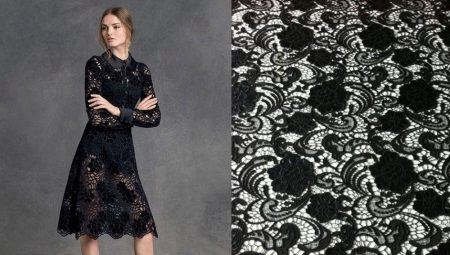
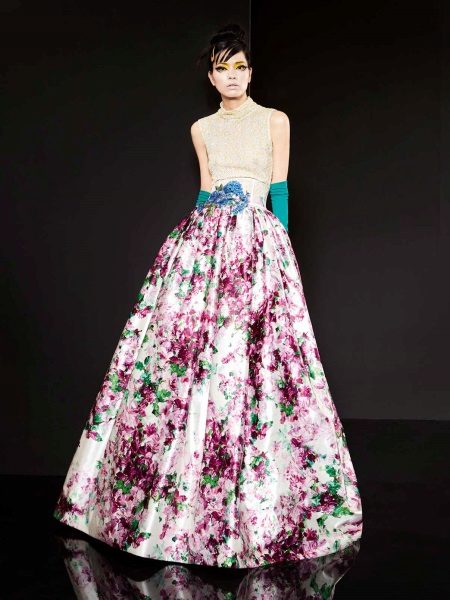
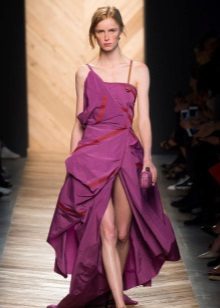
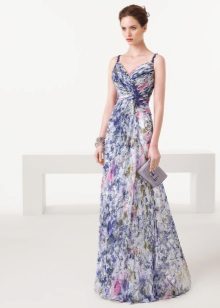
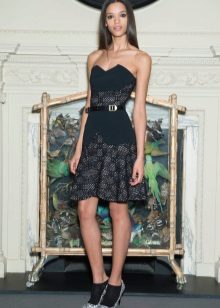
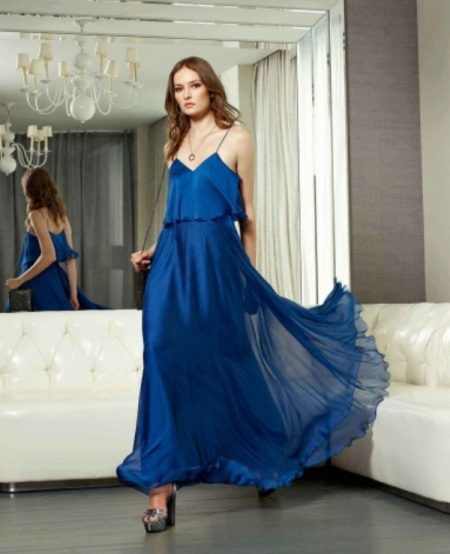
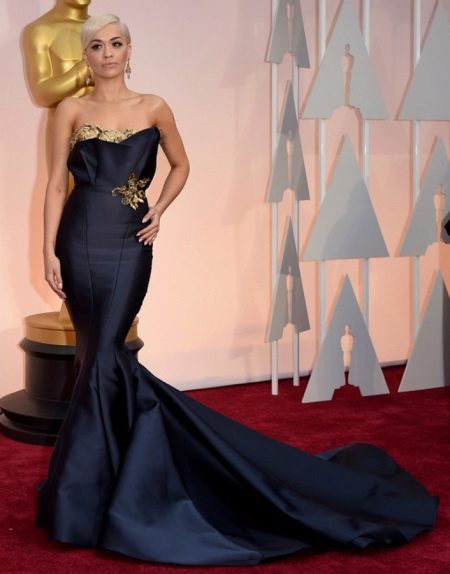
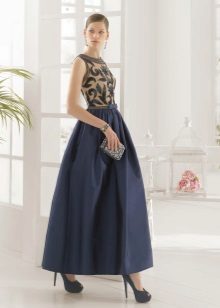
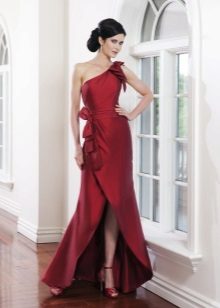

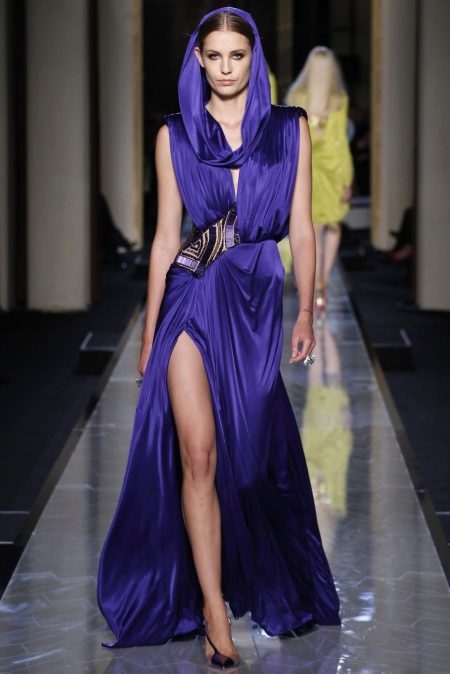

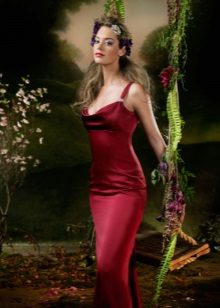
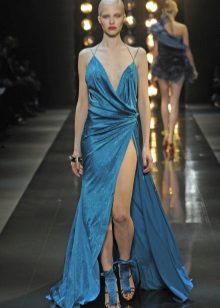
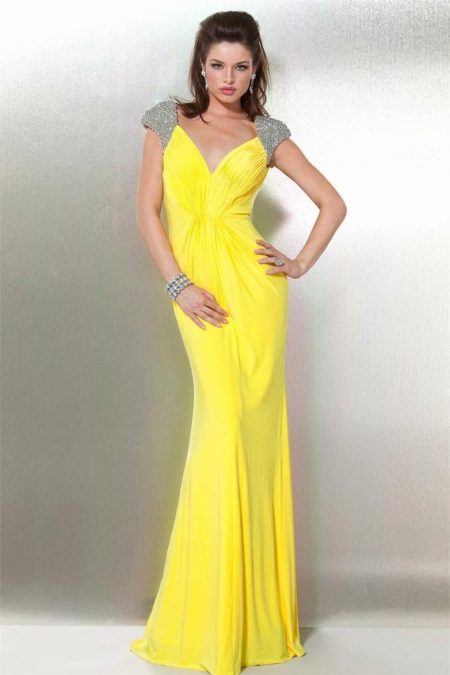
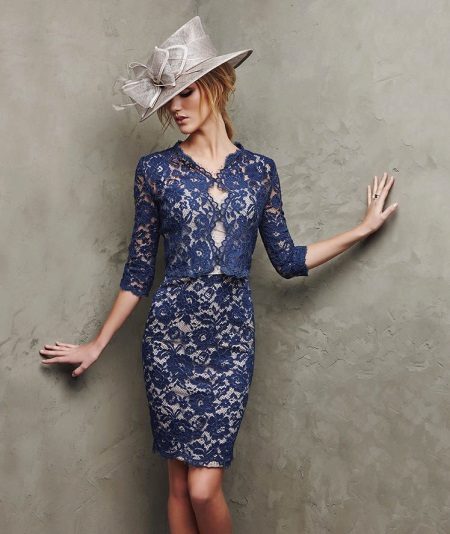
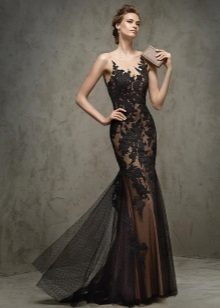
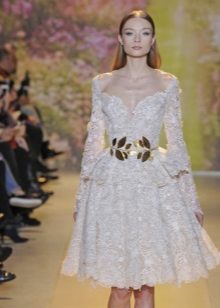

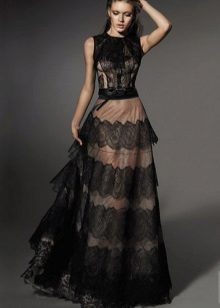
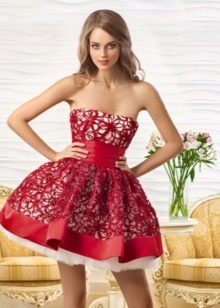
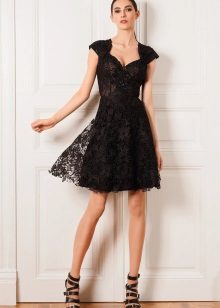
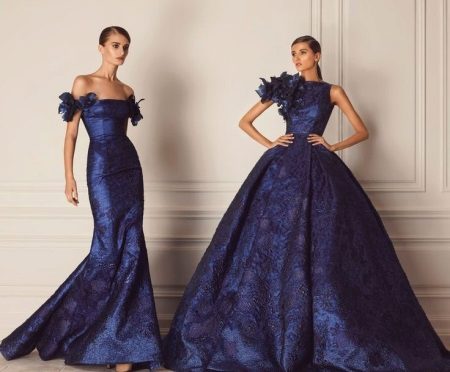
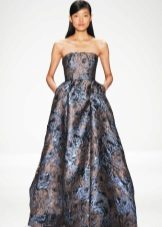
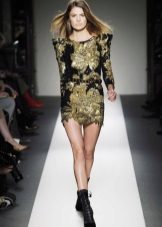
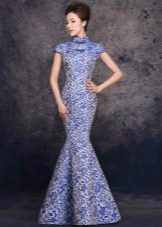
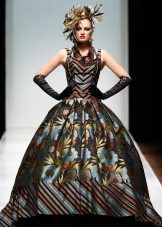
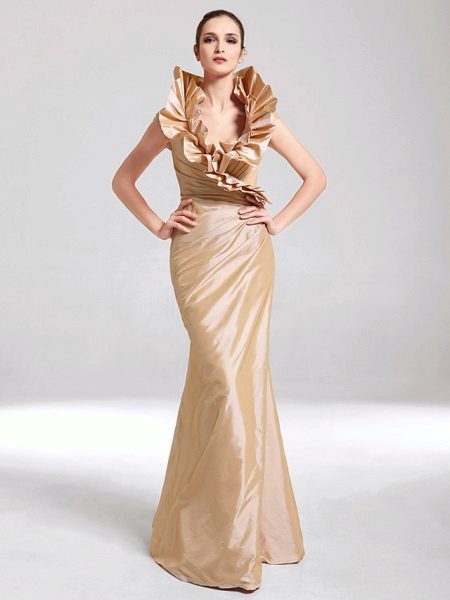
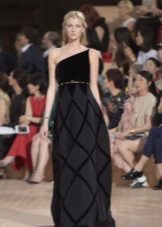
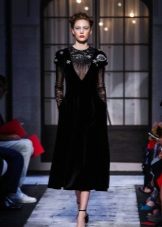
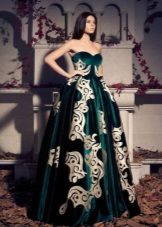
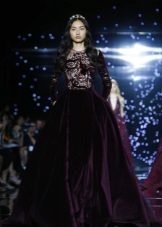
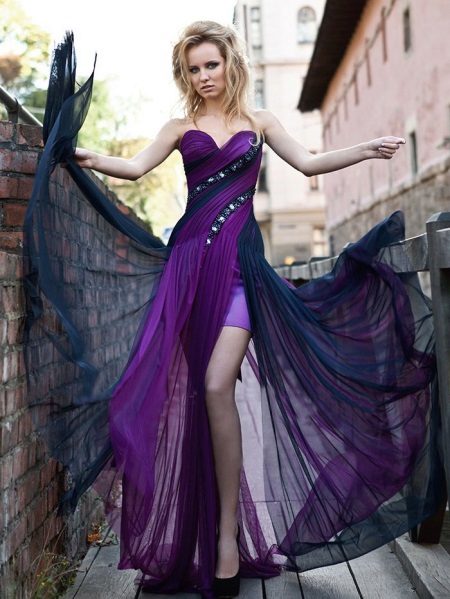
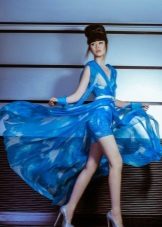
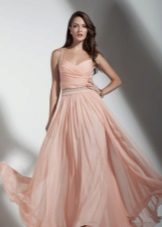
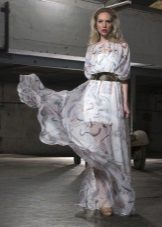
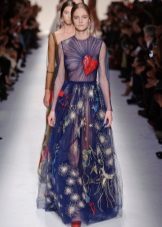
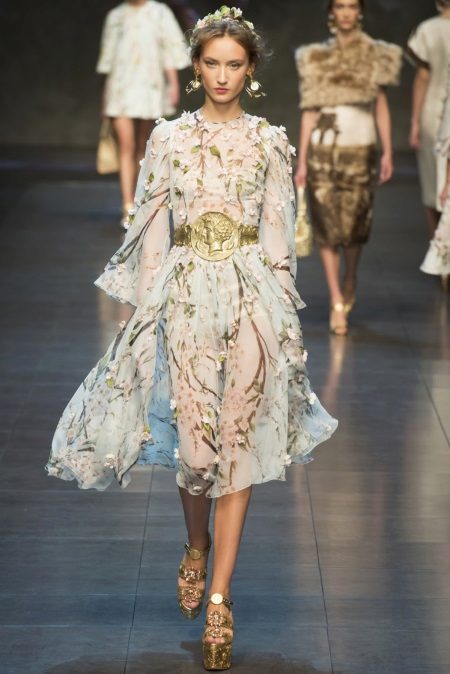
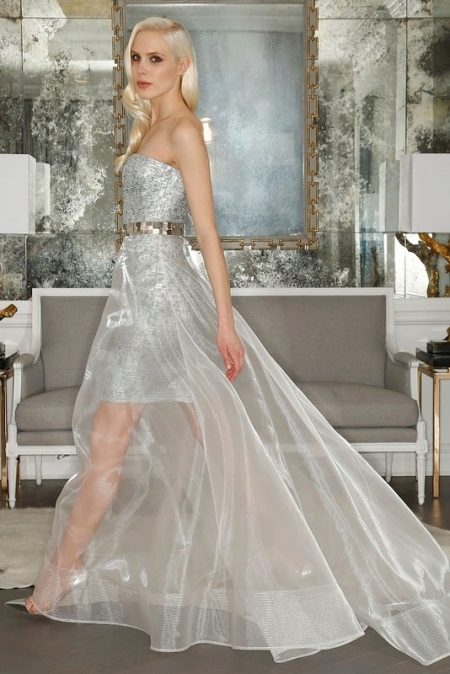
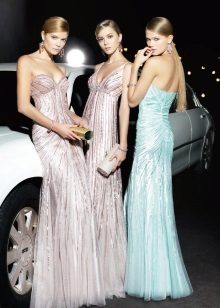
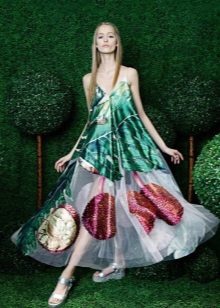
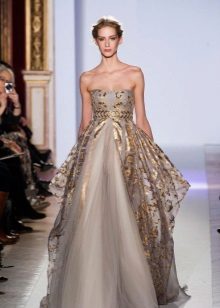
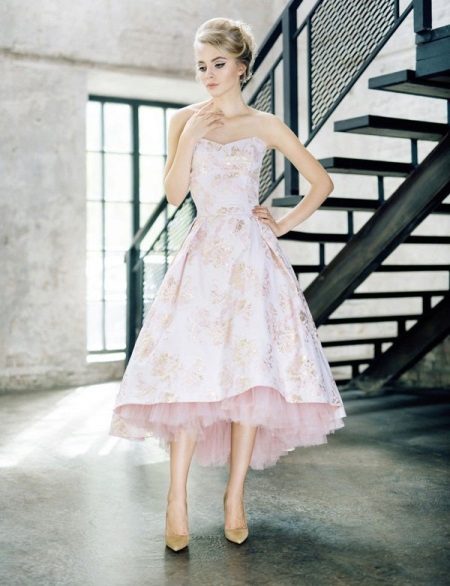
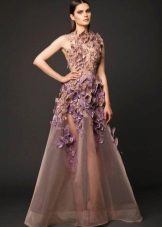
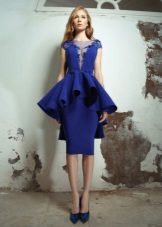
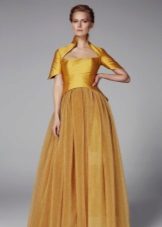
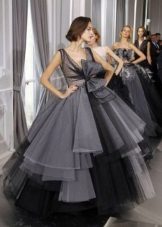
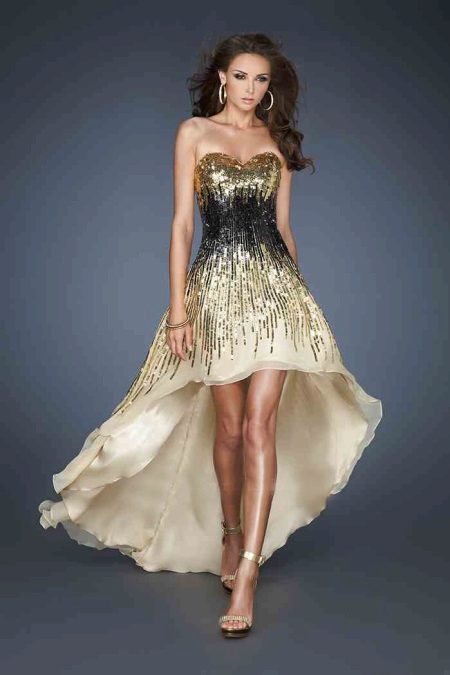











Those who do not have the skill of sewing, I advise you not to start with thin fabrics. Working with them is difficult.